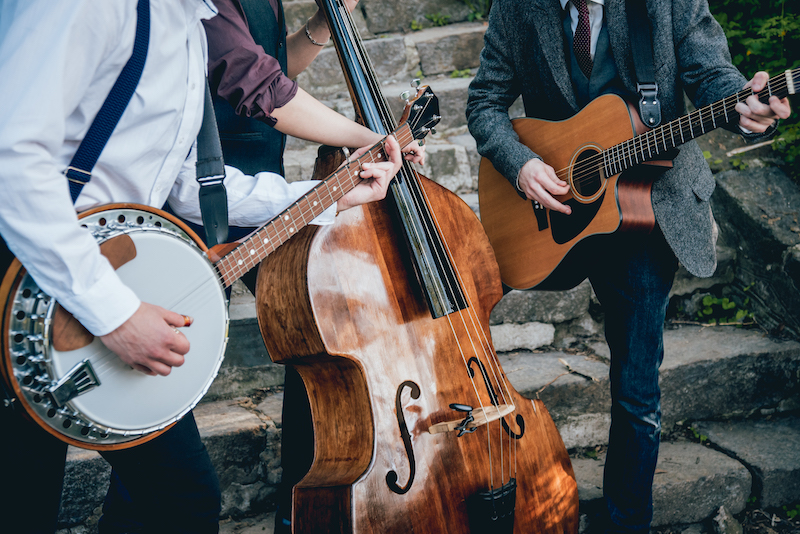The emergence and consolidation of choro in the federal capital
The construction of the new capital in Brasilia was the beginning of major transformations in Brazil’s social, political, economic and cultural landscape, the result of the country’s process of internalization and modernization. Given the new socio-political circumstances of the time, the socio-cultural development of the city under construction was the responsibility of artists already established in their milieu, especially choro.
At the beginning of social interactions driven by music, there were soirees and meetings, which relied on the kindness of the new residents of the central region of Brasília, who organized the events and invited the newly arrived musicians, where the musical interlocution was the main reason for contact between the people who began to frequent these private spaces. At that moment, one of the greatest chorões of all time in the region of the capital that was being built was on stage, the notorious Heitor Avena de Castro, a Brazilian sitarist of classical and popular music. As a performer, composer and arranger, part of this musician’s biography is directly related to the development of the Brazilian choro scene.
In the years following the advent of Brasília, another important figure emerged for the resistance and guaranteed posterity of choro, known as Reco do Bandolim, a member of Choro Livre and current president of Clube do Choro. His contribution lies mainly in the fact that he revitalized the Club and conceived the construction of a definitive headquarters for the Raphael Rabello Brazilian Choro School. The analysis of the roda de choro will be based on the concept of musical order, which considers the following fundamental spaces

of the practice of choro as a cultural system. Under the prism of the roda de choro as a matrix of endoculturation and learning with music made in the urban context, the development of social interaction and cultural material is appreciated. It can be seen that in choro venues, the dispute for respect and prestige between musicians who demonstrate their skills through a variety of practices is a constituent part of the rodas.
Crying and issues of gender and race
To the extent that social dynamics are formed through a remaking of the self and its actualization as a practice and phenomenon, sociability finds ways of integrating the agents of participation in the cultural system in force, in other words, how the individual is linked to the roda de choro in the social environment in which they are inserted. From a gender perspective, it is understood that there are very well-defined social facts in the performance spaces of choro, which are normative and produced predominantly by male figures. That said, under the aegis of the Western model of socialization, one cannot separate the definition of the gender role that runs through the actions of individuals, in which women are underprivileged and their participation in the wheel is made precarious. In this way, the feminine remains scarce as an active agent in this musical endeavor, even though she is a recurring subject in the compositions: the feminine achieves the role of theme and not of participating subject. However, despite the limits imposed, the stories and biographies of other women who stood out in the past or stand out in the present in the medium of choro serve as inspiration for future generations of women.
Therefore, the discussion focuses on the technical perspective of the body as a way of prospering a musical tradition, seeking to strengthen it as much as possible in the face of time and the lack of dissemination. When we consider the historical and musical value of choro as an urban music of black origin, we see that its perpetuation is driven by its practitioners throughout Brazil, who go against the mainstream. Therefore, in order to integrate into the choro scene as an instrumentalist who wants to participate in rodas or make presentations, it is necessary for the individual to develop a repertoire. According to what they consider to be more experienced chorões, knowing at least the classics and the basic repertoire of the songs on their instrument is of the utmost importance for developing as a chorão.
In this way, both technique and execution are glimpsed in the playing styles of great names in music, who have established new paradigms for interpretation, composition and arrangement.
As for the subject of improvisation, there really is no watertight definition that covers it all. However, it can be seen as a way of playing that takes into account a melodic variation, where there are no changes to the structure of the melody or the rhythm. Therefore, when it comes to the application of improvisation, there are internal points of contradiction among the more experienced musicians that are imposed as a certain obligation on those who want to make a name for themselves. This principle was carried out by baluartes with the highest visibility and recognition, as well as by chorões considered to be their followers and perpetuators of their work. In this environment, the performance is constituted by the technical execution and evaluated based on its expression. In this way, both technique and execution are glimpsed in the playing styles of great names in music, who have established new paradigms for interpretation, composition and arrangement.
The different sociabilities that converge in the spaces where the cultural practice of choro takes place are associated with a social musical order. In this way, there are different perspectives on how the roda de choro takes place, following an etiquette, an ethic as well as rules for the composition of instruments in the roda. Still in the sense of the musical order as an elucidation of the meeting of various cultural narratives, it can be seen that the individual worldview is found in the collective and vice versa. This means that the way of relating to other participants in the roda is biased by a vision conceived as an external factor of the roda de choro, according to what is perceived, for example, in gender relations involving inequality between men and women who work in the roda. In fact, what can be seen is that male individuals adopt different attitudes and behaviors depending on their gender when dealing with the subject of crying.
Occasionally, men assume the position of masters or great connoisseurs who allow themselves to be judged by the work done by women with the intention of delegitimizing women’s musical practices, even if this is not stated. This disintegrating objective is reinforced as a negative element of the wheel when the legitimizing position is not fulfilled by the medium and the male body shows surprise or some unhealthy commotion. After all, self-criticism is enough as the perception of oneself in the environment sharpens and where education and companionship can or should take place. It’s worth pointing out that visualizing the negative element is everyone’s duty, with due regard for the various social markers, mainly origin, color, gender and age, among others.
Choro and its territorialities in the Central Plateau
Regarding the possible ways of being inserted into the musical environment, choro is experienced as an ennobling and enriching activity from a cultural point of view. To the extent that the development of rodas is seen as the development of the individual, made up of all its complexity, it becomes possible to analyze the roda as a social fact that is crossed by the emergence of a diversity of sociabilities. According to this view that choro takes place through meetings of points of view and integrated musical perspectives, we see that from the beginning of the spread of choro in Brasilia, the meetings were primarily based on cordiality between the chorões.
To that extent, we can see in this a positive point of integration that occurred in the past that can be rescued to keep choro alive as a tradition in the city, taking the opposite path to what is perceived today in the milieu, which is one of great centralization and the maintenance of privileges, especially in a geographical sense. We only have to ask a simple question to understand this scenario: where do most of the rodas de choro take place in the Federal District? Why is that? Knowing these variants, can we say that there is cordiality in the meetings? These are questions that remain for the practitioners of choro in the various localities of the Central Plateau, so that there can be more reflections on the integration between different regions in the satellite towns around Brasilia.
It is therefore essential to understand that there are different trajectories and that ordinary people can be extraordinary in their own contexts, and that the space of choro should not only be supported by the bastions and established artists. In fact, we can appreciate choro and its various ways of existing and being in different spaces, making them places of culture in the sense of existing with their own specificity and quality, autonomous and, above all, alive. Furthermore, this statement is in line with the idea of decentralizing the cultural practices of choro to a greater diversity of people and places that seek to integrate new possibilities of artistic interpretation and the revival of other musical orders that are not yet known and disseminated in the territory. Territoriality therefore has a direct influence on the musical order that is experienced and built collectively, both in the sociability that brings creative novelties and in the repertoire that develops autonomously in that place of culture as an openness to different possibilities and interpretations.
Proof that the painstaking work done since the 1960s has paid off is that after years of seeking greater representation and active institutional intervention to publicize and spread choro throughout the country and the world, choro was recognized by the National Historical and Artistic Heritage Institute (IPHAN) as an intangible heritage of Brazil, inscribed in the books of expressions.
We know that the ancients left us a legacy of culture-making, coining choro as a Brazilian genre in the context of an urban Brazilianness of black origin. In the context of Brasilia, the image of crying goes hand in hand with the birth of the city and brightens up a place under construction that didn’t have many means of socialization. On the other hand, the meetings in the chorões’ houses, which used to take place informally, were transformed, turning the once private space into an educational institution and a performance venue for various artists. This seed of choro in Brasilia was of great value for posterity, where even greater flights were taken due to the legacy that was built from these small group meetings. What’s more, they left behind a great cultural legacy that now, decades later, has blossomed and borne fruit from the efforts of the older generations who have cultivated the cultural richness of choro in young people. Proof that the painstaking work done since the 1960s has paid off is that after years of seeking greater representation and active institutional intervention to publicize and spread choro throughout the country and the world, choro was recognized by the National Historical and Artistic Heritage Institute (IPHAN) as an intangible heritage of Brazil, inscribed in the books of expressions. To a large extent, this brings Brazilian music to the place of public interest, of investment and care for memory, in which its historical value and cultural heritage are recognized and new projects to expand its legacy throughout the country begin.

In order to exemplify and talk about individuals in choro who have made great timeless contributions to the music, one of the greatest of all time is Waldir Azevedo. Furthermore, it’s worth emphasizing that his genius only has its own meaning when we perceive it in its relationship with the collective, insofar as his compositions are historical and cultural legacies that don’t end in themselves or in Waldir’s personality alone, but that are statutory to a national identity through which it was manifested by this great artist. So, even though he is an established chorão and is among the biggest commercial successes of Brazilian music of all time, it can be seen in his biography that the author of ‘brasileirinho’, ‘delicado’, ‘vê se gostas’ and many other tracks, was interested in the Brazilian people, in building a musical identity and nationality for Brazil. This can be seen in Waldir’s humble origins. In his music, he brings a new way of composing and playing that was born out of innovations inherent in his creativity, molded to his sociocultural context, which, in order to be possible, had to remake, for example, the roles established up until now for the cavaco and the formation of the regionals. Waldir was a new perception of the musical order, proof that decentralizing musical practice can work very well and that innovation can be beneficial for the music scene, which in this case has never been the same.
In this way, the points raised here are interrelated and are part of a unit that aims to contribute to a musical or musicological thought that is circumscribed to the field of playing choro, listening and being listened to and, above all, demonstrating that there are always new possibilities and that choro is not confined to any time, place or agency.












